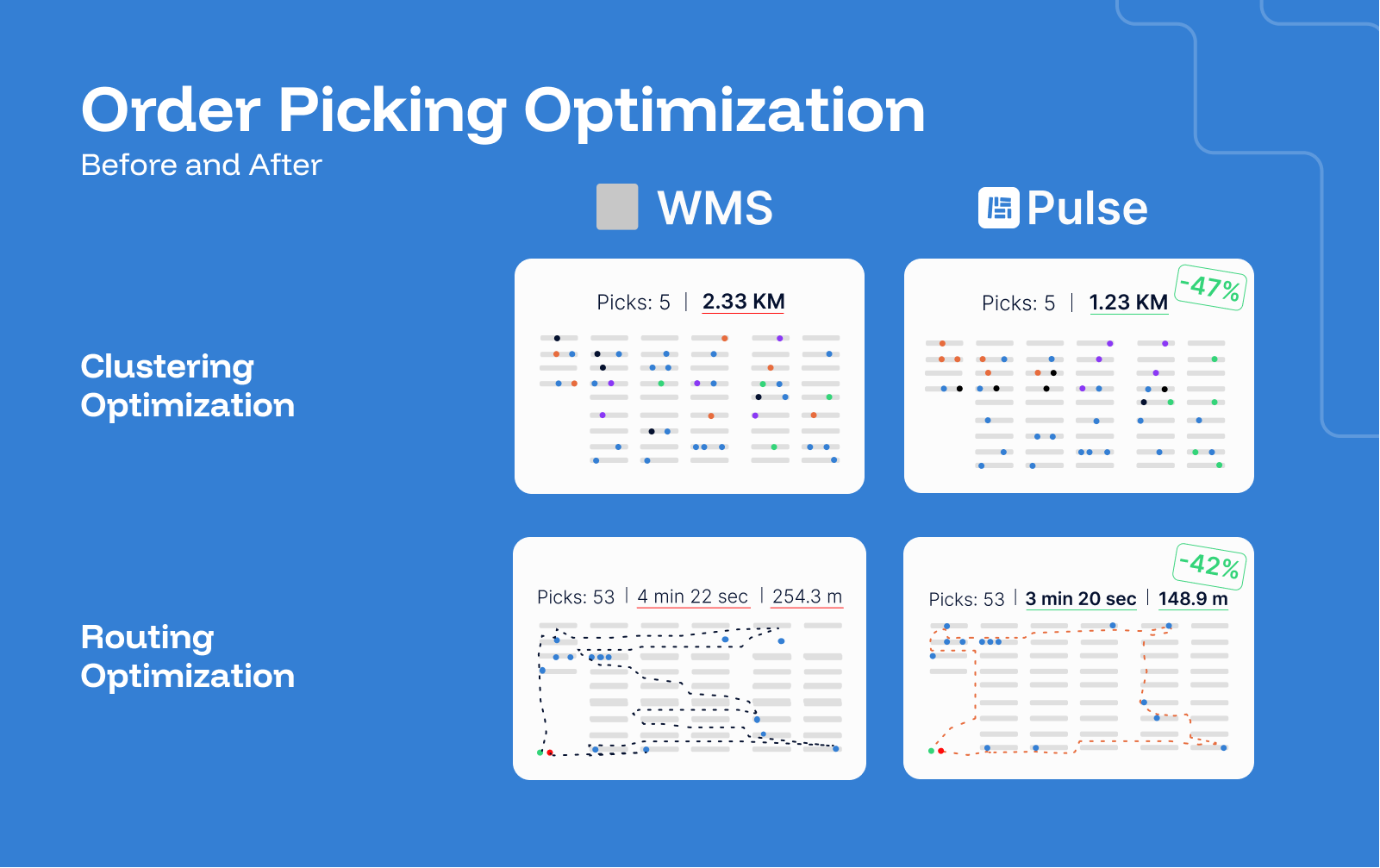In today’s demanding logistics environment, warehouses face mounting pressure from rising labor, space, and carrier costs. While standard Warehouse Management Systems (WMS) handle basic execution, they often rely on simple, rule-based logic that fails to calculate the fastest or most efficient way to complete tasks like picking and packing.
This gap has led to the emergence of advanced Warehouse Optimization Software (WOS), which focuses on providing decision intelligence to maximize throughput from existing sites. One of the most effective applications of this intelligence is Time-Aware Scheduling (TAS).
Time-aware scheduling is an advanced planning method that prioritizes and plans pick and pack work by due time first, and only then optimizes for walking efficiency.
Time aware scheduling is designed to ensure that the right pickers are assigned to the right work at the right time.
This planning aligns the expected pick-and-pack finish times directly with non-negotiable deadlines, such as carrier cut-offs and customer promise times.
As new orders arrive (or "drop"), the system continuously replans throughout the day.
Time-Aware Scheduling is considered a core use case within Warehouse Process Optimization and specifically falls under Order Picking Optimization.
The sequence of decision-making in time-aware scheduling is critical. The logic sequence ensures that the primary goal, on-time shipping, is guarded before any attempt is made to save travel time.
Time-Aware Scheduling in order picking relies on the following structured approach:
- Define Departure Windows: The system first establishes time buckets centered around each key departure window (for example, 12:00, 15:00, 17:00).
- Due Time First: For each defined time bucket, the system prioritizes and releases orders with the earliest due times.
- Efficiency Batching: Only after the time-sensitive orders are prioritized are the remaining orders grouped into efficient batches. This batching process respects operational constraints such as cart capacity, volume limits, and potential zone overlap.
- Optimized Routing: A pick path is created for each batch, aiming for the shortest feasible route. Critically, a distance-saving move or swap is only allowed if it does not increase the risk of lateness.
- Dynamic Rebalancing (Rolling Horizon): The plan is not static. The system continuously rechecks the backlog and plan every few minutes. This allows the system to pull urgent late arrivals forward or split/merge existing batches if a deadline is suddenly at risk due to new work.
This sequence is essential because due times are the primary guardrail for on-time shipping, while distance optimization is secondary, only applied once deadlines are safe.
Optioryx focuses on delivering process-first, software-enabled improvements that deliver measurable gains in days and weeks.
Time-aware scheduling is a vital component of this strategy, particularly through the Pulse solution.
Optioryx’s Warehouse Optimization Software (WOS) acts as an intelligence layer working on top of your WMS, TMS, or ERP.
It is specifically designed to address scenarios where order release times vary throughout the day. In the context of Optioryx, the application of Time-Aware Scheduling ensures that:
- The time to perform picking and packing aligns with carrier cut-offs and customer due times.
- The system uses the digital twin warehouse layout map to calculate accurate travel times and test optimization strategies, which is a key building block for enabling practical AI use cases.
- It provides the decision logic that guides the deployment of active pickers, ensuring they prioritize work around crucial deadlines.
Whether a warehouse uses short waves, time-boxed waves, or is moving toward a waveless environment, time-aware scheduling provides the strict due-time guardrails needed for releases or many small cut-offs.

To enable effective time-aware scheduling, the underlying optimization algorithm requires specific, accurate data inputs.
Required Inputs Metrics to Measure (KPIs)
Order release times (SLA windows) -> On-time performance to carrier cut-off and customer promise
Carrier cut-offs by lane -> Maximum delay & avg. tardiness per window
Pick/pack estimates and travel times -> Lines per tour and meters per line
Picker availability, speed, and skills -> Pack-station utilization and overtime.
Cart/tote and pack-station capacities -> Rebalance count and plan stability
By leveraging time-aware scheduling intelligence, logistics professionals can move beyond static rules and ensure that their picking optimization efforts effectively guard on-time shipping while significantly reducing travel and increasing efficiency.
Questions?
Warehouse Optimization Software (WOS) goes beyond the basics of a Warehouse Management System (WMS) by using advanced algorithms, data, and simulations to make warehouse operations like picking, slotting, and packing more efficient.
A digital warehouse map is a virtual model of your facility that includes aisles, racks, movement rules, and constraints. It forms the base for optimizing picking and slotting.
Pulse supports 3 options: manual file imports/exports, flat files (CSV/SFTP), and direct API integration with your WMS, TMS, or ERP.
Pulse optimization algorithms are exposed by an API that can be integrated into any WMS, TMS, ERP system.

